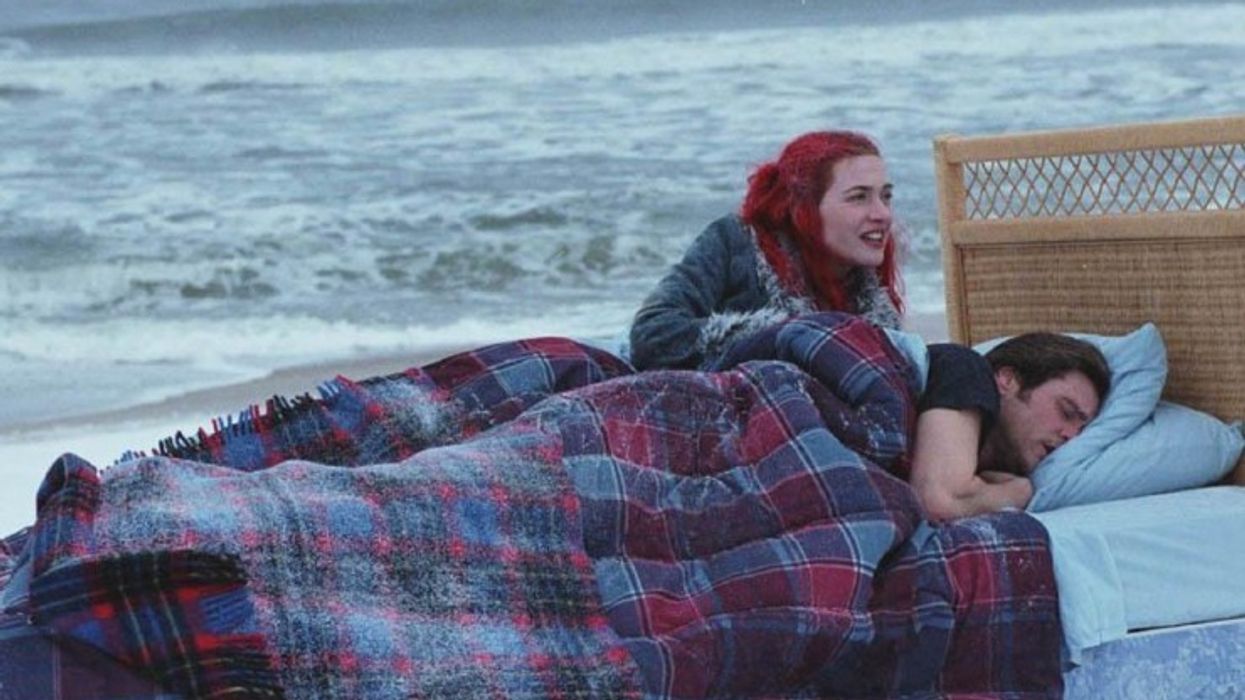What Are Litotes? (Definition and Examples)
Writers everywhere want to craft memorable lines.

'Eternal Sunshine of the Spotless Mind'
Cinema is a medium that thrives on storytelling techniques that were perfected long ago. Among the many tools in a filmmaker's arsenal, are literary devices that have helped creatives for thousands of years.
The one we're going over today is called litotes, which is a figure of speech often employed in writing and speech, that has quietly but powerfully made its presence known in the world of film.
In this article, we'll dive deep into the definition of litotes, explore its nuances, and examine some compelling examples of its use in cinema.
Let's dive in.
What is LITOTES? Definition & examples by Jane Austen & William Shakespeare—Litotes Figure of Speechwww.youtube.com
Litotes Definition
Litotes, derived from the Greek word "litotēs," meaning "simple," is a rhetorical device that involves deliberate understatement to emphasize a point or idea. Rather than directly affirming a positive statement, litotes employs negation to express its opposite.
This indirect approach adds subtlety, complexity, and depth to the communication, making it a valuable tool for filmmakers looking to engage their audience on multiple levels.
Why Do Filmmakers Use Litotes?

'The Shawshank Redemption'
Credit: Columbia Pictures
There are lots of reasons to use litotes as a filmmaker. In fact, you might already be using them. The more I write about these terms, the more I see them occurring in my own writing, and see them in the movies and TV shows I love.
So why use them?
Here's a list of reasons:
- Subtlety and Nuance: Litotes allows filmmakers to convey complex emotions, ideas, or situations with subtlety and nuance. By employing understatement, they encourage viewers to read between the lines and engage on a deeper, more intellectual level.
- Emotional Impact: Litotes can amplify the emotional impact of a scene. By downplaying or negating a statement, filmmakers create a contrast that draws attention to the underlying emotions or themes. This can result in a more profound emotional response from the audience.
- Engaging the Viewer: Litotes can pique the viewer's curiosity and engage their imagination. When viewers are presented with an understated statement, they are encouraged to actively participate in the storytelling process by inferring the intended meaning.
- Adding Depth to Characters: Characters in films often use litotes in their dialogue, adding depth to their personalities. This indirect communication can reveal character traits, internal conflicts, or hidden motivations, making the characters more multi-dimensional and relatable.
- Creating Suspense: Filmmakers use litotes to build suspense by hinting at a significant event or revelation without fully disclosing it. This technique can keep viewers on the edge of their seats, eagerly anticipating the unfolding of the story.
- Highlighting Themes: Litotes can be employed to underscore the central themes or moral dilemmas of a film. By indirectly addressing these issues, filmmakers invite viewers to contemplate and reflect upon the deeper meaning of the narrative.
- Memorable Dialogue: Memorable lines of dialogue often use litotes because they stand out in the audience's memory. The indirect and thought-provoking nature of litotic statements can make them more memorable and quotable.
- Maintaining Realism: In some cases, litotes mirror how people communicate in real life. People often use understatement to express complex emotions or to avoid direct confrontation. By incorporating litotes into dialogue, filmmakers can create more authentic and relatable conversations.
- Cultural and Artistic Tradition: Filmmakers draw from literary and rhetorical traditions, and litotes is a well-established part of that tradition. It allows filmmakers to connect their work to the broader history of storytelling, adding depth and sophistication to their narratives.
- Challenging Audience Expectations: Using litotes can subvert audience expectations and create surprises. Viewers may anticipate a direct statement but are instead presented with an understated or negated one, leading to unexpected plot twists or revelations.
Litotes Examples

'Schindler's List'
Credit: Universal Pictures
There are lots of great examples within film and TV, but I wanted to pull some major titles for you to check out.
- The Shawshank Redemption (1994): In Frank Darabont's iconic film, the character Andy Dufresne, played by Tim Robbins, utters the memorable line, "I guess it comes down to a simple choice, really. Get busy living or get busy dying." The use of litotes here, with "simple choice," understates the profound impact of the decision, making it all the more resonant.
- Schindler's List (1993): Steven Spielberg's Holocaust masterpiece is a haunting example of litotes. The film's tagline, "Whoever saves one life, saves the world entire," utilizes understatement to underscore the enormity of a single life's worth. This technique elevates the moral dilemma at the core of the narrative.
- The Godfather (1972):Francis Ford Coppola's crime epic provides another notable example. In a pivotal scene, Michael Corleone, played by Al Pacino, tells his brother Fredo, "I know it was you, Fredo. You broke my heart." The understated "You broke my heart" carries more emotional weight than a more direct expression of betrayal ever could.
- Eternal Sunshine of the Spotless Mind (2004): Michel Gondry's surreal exploration of love and memory employs litotes throughout the film. When Joel, played by Jim Carrey, describes his relationship with Clementine, he says, "I can't see anything that I don't like about you." This indirect affirmation adds complexity to the character's emotions.
By understating the obvious and inviting viewers to read between the lines, filmmakers can craft more nuanced, emotionally resonant narratives.
As you explore the films mentioned and watch others with a discerning eye, you'll likely discover countless examples of litotes enriching the cinematic experience, reminding us that sometimes, less truly is more in the art of storytelling.
Let me know what you think in the comments.











